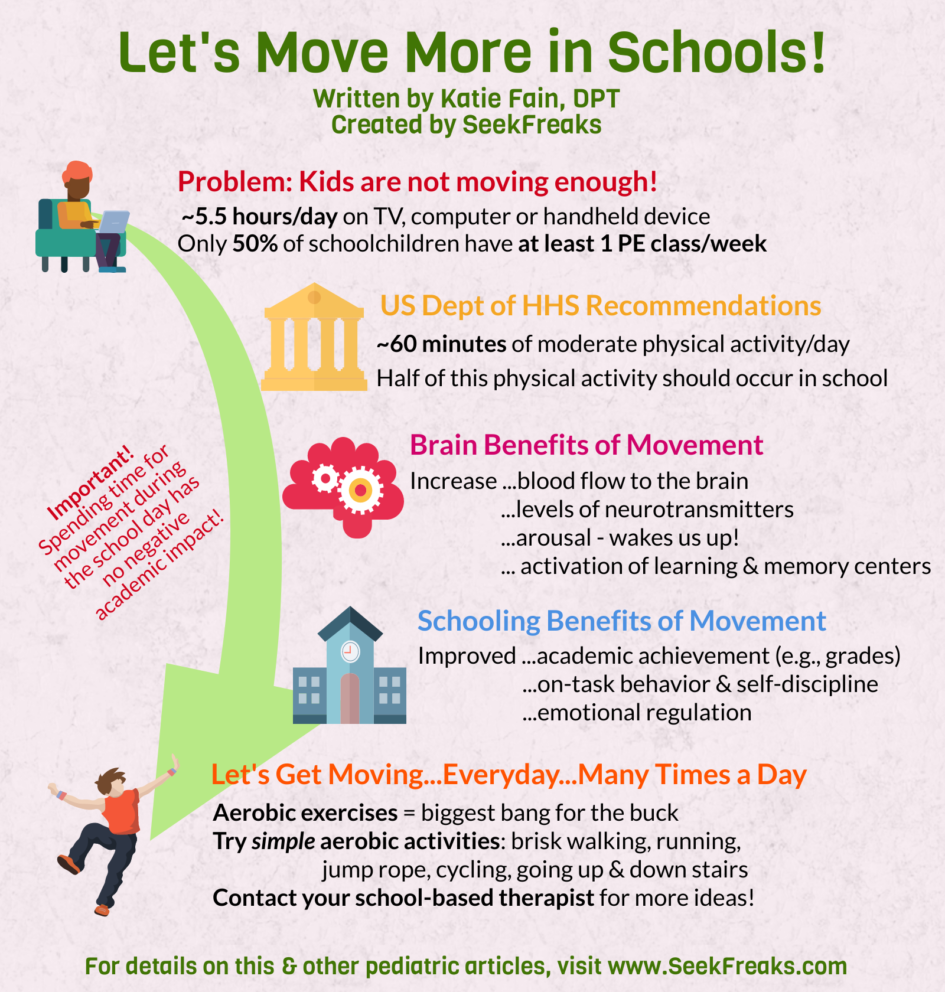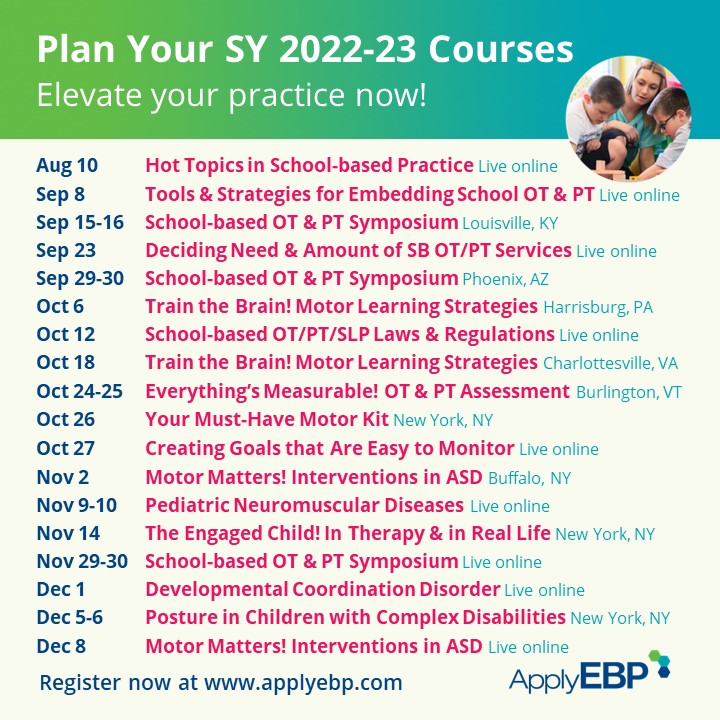Written by Katie Fain, DPT. Katie lives in Northern Michigan with her husband, two young kids and her old dog. She feels very lucky to be a school-based PT, and loves the energy of the students she works with. When she is not working or busy with her own kids, she loves to run and bake (not necessarily in that order).
For more ideas on promoting movement in the schools, check out these Apply EBP webinars
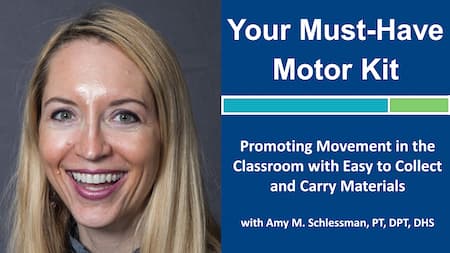
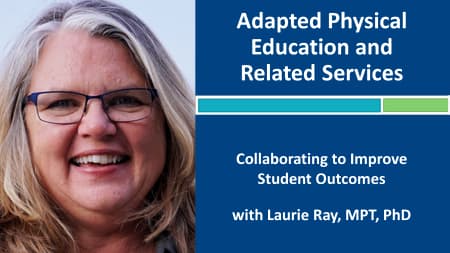
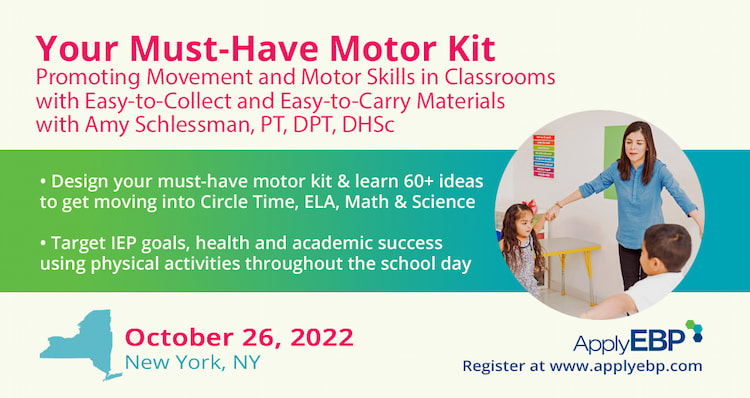
We Are Movement Experts!
We are experts on how exercise and movement can heal the body, improve quality of life and help children (and adults) function better!
It was only a few years ago that I stumbled upon a book that made me dig deeper about how physical activity is connected to learning, emotional regulation and attention. (For those who are interested, this book is called Spark, by John Ratey).
I have always felt a little bit like an outlier in our educational system as a physical therapist. So unique, that often, people just assume I am an occupational therapist. Or, just a crazy lady that walks in the door with a stomp rocket or a rolling basket full of colorful ‘who knows what’.
But when I looked into the research about how much physical activity affects brain function, I was floored! I felt like I could not only contribute to a child’s physical participation in school, but I could also help ALL CHILDREN by educating school staff, parents and students about how exercise positively affects our brain.
But here is the thing…go ahead and tell teachers, paraeducators and principals that they need to DO ONE MORE THING. I dare you!
These amazing educators’ plates are the definition of full. Informing them that on top of all the other hats they wear, they also need to wear the “personal trainer” hat…that will not go over well.
So, how do we have an impact on the amount of physical activity in schools? How do we make movement contagious?
Well, spoiler alert, I don’t have the answer for your particular school/schools. Each school is different. But, there are many ways to try. And you have evidence on your side. Here is my 3- Step Approach that I hope you find helpful:
- Create Awareness
- Share Movement Ideas
- Be Ready When a Bigger Opportunity Arises
STEP 1: CREATE AWARENESS
I started by sharing articles and TED talks with teachers and principals with whom I had very good relationships with. Here are my go-to resources to share:
TED Talks
- How Exercise Can Transform Schools by John J. Ratey, MD
- The Brain-Changing Benefits of Exercise by Wendy Suzuki
Must-reads
- http://parentingscience.com/exercise-for-children/
- https://www.kqed.org/mindshift/53681/how-movement-and-exercise-help-kids-learn .
Infographic
You can also download the infographics accompanying this article if you want a simple 1-pager to share with your team, or leave in your colleague’s mailboxes. There are 2 versions:
- PNG version
- PDF version with a box to add your name and contact information
I also love sharing this article from the CDC that said “…there was no evidence that allotting classroom time for these [physical] activities was negatively associated with academic achievement” (p. 23). They stress that increasing physical activity can improve grades and even standardized test scores, and the time spent doing this does not negatively impact academic performance.
If I am being honest, it takes fifteen people to receive this information from me, to get one person who is interested! But I will also tell you, if you get JUST ONE teacher or principal interested, it can lead to great things.
STEP 2. SHARE MOVEMENT IDEAS
In one school I serve, a teacher asked if I was willing to present to the whole school on an inservice day. It was such a great experience, presenting to teachers and the principal about this topic.
We had great discussions on how to make more movement happen in their particular school. Here are some things you can be prepared for, with my accompanying experiences.
- Movement Ideas for Small Spaces
- Teachers have come to me for guidance on how to do some movement breaks in their limited space
- 5-Minute Movement Breaks
- 5 minutes is easier to spare. I go into the classroom and give them a list of ideas for 5-minute movement breaks for them to choose from.
- Really Simple Movement Breaks
- I started seeing teachers taking their whole middle school class up and down the stairs for 5 minutes before starting their lectures. (See more simple ideas in Step 3 below).
- Movement with Songs
- A Spanish teacher reached out for advice about incorporating movement into songs her class sings.
I love how movement has become something teachers think about when they see their class zoning out or getting wiggly. Beautiful!
Looking for movement ideas, check out this SeekFreaks article. Under the subheading “Home Activity Resources: Home Aerobic and Gross Motor Activities” is a list with links of websites for physical activities. You can also read Karen Tartick‘s SeekFreaks article on 9 Lessons to Apply from an Evidence-based Yoga Program for Children with Autism Spectrum Disorder.
STEP 3. BE READY WHEN A BIGGER OPPORTUNITY ARISES
Now it’s time for movement to spread further!
In another elementary school, one teacher was all about movement in education! He already had the idea to take his students on a 5-10 minute walk every day. So I latched onto him and forced him to do more (just kidding!).
When I spoke to him about all the research that backed up what he was doing, he felt empowered to do more. I spoke to the principal about the evidence, shared the book ‘Spark’ and other articles. The principal asked if I would present to parents about this. And I did!
About 10-15 parents showed up to my presentation. The principal was there and he listened. Now, that teacher has the permission/blessing from his principal to do “Morning Movement.”
He does 20 minutes every…single…day. Yes, every day! What does he do?
- In the Fall, he takes his whole class to the track to run and walk.
- In the Winter, they cross country ski. Yes, the weather does not stop him!
- This year he even teamed up with a local bike club to install a bike course on school property and he takes his class out every day. The bonus is that other classes also had the opportunity to sign up for blocks of time on the course. (Want to read more about their bike program and what benefits the teacher is seeing in school? Click here.)
Now, movement has truly become contagious!
Physical activity is expanding from one conversation, to a school presentation, a parent presentation, this particular teacher’s classroom, and into the whole school.
MORE IDEAS
My favorite part about the research that supports increasing physical activity in schools is that although there are startling statistics about how much kids are sitting and inactive, (The American Academy of Pediatrics estimates 8.5 hours a day! Yikes!) we are not all doomed.
The science is amazingly positive and shows that we can improve the lives of children by being advocates for more physical activity during the day. Here are some ways to do it:
- Introduce movement as part of what you do as a school-based therapist.
- Usually, in the Fall, I send out a little introduction to school staff. I give my little elevator speech (Thanks, SeekFreaks, for ideas about that!) but I also tack on something like “I am also passionate about getting ALL kids moving more, and would be happy to share information about how physical activity benefits kids in the classroom. I could even help brainstorm some ideas for increasing movement in your classroom or school”
- Educate teachers, students, parents, about the benefits of movement.
- At IEP, staffing and matrix meetings, I bring up physical activity as something to try if there are attention, focus or behavior problems. Then I follow up with the articles I listed above. During casual troubleshooting, conversations with teachers, I suggest movement breaks. If I see a teacher already doing movement breaks, I send a supportive email with sources that back up what they are doing.
- Share the SeekFreaks infographic above!
- Take the time to coach and follow-up.
- Your list of 5-minute movement breaks require accompanying time and training. Take 5 minutes to demonstrate them to, and rehearse them with a teacher who is interested. They’ll learn how easy they are to do and that they only really take 5 minutes. Then check in with them every so often about how it is going. And be ready to support them along the way.
- Don’t force movement down people’s throats.
- I can usually tell when this topic sparks interest in teachers and principals, and when it doesn’t. I have found that when I can get one person interested, it can be the start of something really great…and get contagious.
It is always important for us to strive for an evidenced-based practice. And holy cow, is there a ton of evidence behind what physical activity can do for the brain!
We need to keep up on the most recent developments and share it with the amazing educators that work with kids. We need to support them by giving ideas and sharing our expertise. If we do this, I truly believe that we can make a huge impact.
Join school-based experts in promoting movement and motor skills for our children!
References for this article and the accompanying infographics
- Centers for Disease Control and Prevention. The association between school based physical activity, including physical education, and academic performance. Atlanta, GA: U.S. Department of Health and Human Services; 2010.
- Best J. Effects of physical activity on children’s executive function: contributions of experimental research on aerobic exercise. Dev Rev. 2010; 30(4): 331-551.
- Spark, John Ratey
- Centers for Disease Control and Prevention. Comprehensive school physical activity programs: A guide for schools. Atlanta, GA: U.S. Department of Health and Human Services; 2013.
- National Physical Activity Plan Alliance. The 2018 United States report card on physical activity for children and youth. Washington, DC: National Physical Activity Plan Alliance, 2018.
- Tomporowski P, Davis C, Miller P, Naglieri J. Exercise and children’s intelligence, cognition and academic achievement. Educ Psychol Rev. 2008;20(2): 111-131.
- Carter SE, Draijer R, Holder SM, Brown L, Thijssen DH, Hopkins ND. Regular walking breaks prevent the decline in cerebral blood flow associated with prolonged sitting. J Appl Physiol 2018; 125: 790-798.
- Drollett ED, Scudder MR, Raine LB, et al. Acute exercise facilitates brain function and cognition in children who need it the most: an ERP study of individual differences in inhibitory control capacity. Developmental Cognitive Neuroscience. 2014; (7): 53-64.
- Chaddock-Heyman L, Hillman CH, Cohen NJ, Kramer AF. The importance of physical activity and aerobic fitness for cognitive control and memory in children. Monogr Soc Res Child Dev. 2014; 79(4): 24-50.
- Basso JC, Suzuki WA. The effects of acute exercise on mood, cognition, neurophysiology and neurochemical pathways: A review. Brain Plasticity. 2017; 2: 127-152.
- Pontifex MB, Saliba BJ, Raine LB, et al. Exercise improves behavioral, neurocognitive, and scholastic performance in children with attention-deficit/hyperactivity disorder. J Pediatr. 2013; 162: 543-551.
- Beemer, L. R., Ajibewa, T. A., O’Sullivan, M. P., Nagy, M. R., Ransier, B., Stockdill, D., … & Hasson, R. E. (2018). Feasibility of the InPACT Intervention to enhance movement and learning in the classroom. Translational Journal of the American College of Sports Medicine, 3(18), 136-151.
- Fedewa AL, Ahn S. The effects of physical activity and physical fitness on children’s achievement and cognitive outcomes: A meta analysis. Res Q Exerc Sport. 2011; 82 (3): 521-35.
